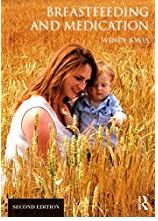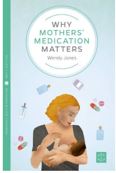Sometimes mothers want to reduce their breastmilk supply. I’ve provided some information and links on herbs and medications – some things have evidence of effectiveness, many do not.
pdf lowering or stopping breastmilk supply
Sometimes mothers experience problems with excessive milk supply especially when weaning. Others may need or wish to stop their milk supply suddenly for a variety of reasons. Several options have been suggested;
Herbal products
- Sage can be used as the herb, as a tea or as drops which are consumed can lower supply https://kellymom.com/bf/can-i-breastfeed/herbs/herbs-oversupply/
- Jasmine flowers. In a 1998 study the use of topical application of jasmine flowers was compared to bromocriptine to suppress lactation immediately after birth. ( Shrivastav P, George K, Balasubramaniam N, Jasper MP, Thomas M, Kanagasabhapathy AS. Suppression of puerperal lactation using jasmine flowers (Jasminum sambac). Aust N Z J Obstet Gynaecol. 1988 Feb;28(1):68-71.)
Abstract (https://www.ncbi.nlm.nih.gov/pubmed/3214386?dopt=Abstract)
“The efficacy of jasmine flowers (Jasminum Sambac) applied to the breasts to suppress puerperal lactation was compared that of Bromocriptine. Effectiveness of both regimens was monitored by serum prolactin levels, clinical evaluation of the degree of breast engorgement and milk production and the analgesic intake. While both bromocriptine and jasmine flowers brought about a significant reduction in serum prolactin, the decrease was significantly greater with bromocriptine. However, clinical parameters such as breast engorgement, milk production and analgesic intake showed the 2 modes of therapy to be equally effective. The failure rates of the 2 regimens to suppress lactation were similar; however, rebound lactation occurred in a small proportion of women treated with bromocriptine. Jasmine flowers seem to be an effective and inexpensive method of suppressing puerperal lactation and can be used as an alternative in situations where cost and nonavailability restrict the use of bromocriptine.” Kellymom reports that other herbs can be used to decrease supply but no evidence from research is supplied to support the statement Peppermint, Spearmint, Parsley,
- Chickweed, Black Walnut, stinging nettles Yarrow, Herb Robert Lemon Balm, Oregano, Periwinkle Herb, Sorrel.
Normal consumption of the herbs as foodstuffs or drinking peppermint tea would not be likely to decrease supply.
Lowered milk supply as a side effect of medication
- Drugs known to lower milk production as a side effect of use as medication are the combined contraceptive pill and the decongestant pseudoephedrine. Use to deliberately lower supply is not supported by research and effects vary with individuals.
Medication to stop milk supply
Two drugs have been marketed to stop milk production. These are bromicriptine (Parlodel ®) and cabergoline (Dostinex®). In the past they have been commonly used to dry up the milk of mothers of babies born sleeping or those who die soon after birth. In this situation the mother’s body will initiate milk production as normal.
These drugs have very severe side-effects, including vomiting, postural hypotension, fatigue, dizziness and dry mouth. Also, particularly with high doses, women may suffer confusion, psychomotor excitation, hallucinations; rarely diarrhoea, gastro-intestinal bleeding, gastric ulcer, abdominal pain, tachycardia, bradycardia, arrhythmia, insomnia, psychosis, visual disturbances, and tinnitus. Cabergoline can also cause depression. They should be avoided if the mother has experienced pre-eclampsia. Both drugs can produce sudden onset sleep or excessive daytime drowsiness and driving should be avoided.
The BNF contains a warning on the use of bromocriptine:

Although bromocriptine and cabergoline are licensed to suppress lactation, they are not recommended for routine suppression when women have decided not to breastfeed, or for the relief of symptoms of postpartum pain and engorgement that can be adequately treated with simple analgesics and breast support. If a dopamine-receptor agonist is required, cabergoline is preferred.
The FDA approved indication for the use of bromocriptine for lactation suppression has been withdrawn, and it is no longer approved for this purpose due to numerous maternal deaths. In 2015, the French pharmacovigilance program published a review of the adverse events associated with bromocriptine use to cease lactation. This group reported 105 serious adverse reactions including cardiovascular (70.5%), neurological (14.4%) and psychiatric (8.6%) events. There were also two fatalities: one 32-year-old female had a myocardial infarction with an arrhythmia, and a 21-year-old female had an ischemic stroke (reported in Hale online, accessed August 2016).
For the suppression of established lactation, cabergoline 0.25mg is taken every 12 hours for two days for a total of 1mg. However, this drug also has significant side effects, including headache, dizziness, fatigue or insomnia, orthostatic hypotension (feeling faint when you stand up), oedema, nose bleed, dry mouth, inhibition of lactation, nausea, constipation, anorexia and weakness. There may of course also be interactions with the drugs prescribed that have caused the cessation of breastfeeding.
For some mothers the choice to donate their breastmilk, following loss of their baby is a comfort and seen as a tribute to the baby’s memory. https://goo.gl/fxA8Xi
“In 1975, when I gave birth to my stillborn daughter, I was given a dry up shot without them even mentioning donating to milk banks as an option. There were a lot of them in those years before HIV/AIDS became an issue. I would have LOVED donating Marisa’s milk. -Chantal”
“A counselor at the hospital instructed her in techniques to dry up her milk.”
“It’s funny,” Weidner said. “No one told me about milk donation. I don’t know how I knew about it. I learned when I was planning the C-section, I knew donor milk was an option, but didn’t know who donated it, never suspected I would become one who would be a milk donor.”
Natural reduction of milk supply
In an ideal world it is better to allow the breastmilk supply to dwindle slowly, by dropping one feed at a time or expressing/feeding only when the breasts become uncomfortably full. It may however be necessary to speed up this process up, but it is still important to avoid blocked ducts and mastitis. It is possible to treat the breasts as in the early days of engorgement, using simple analgesics and cold savoy cabbage leaves in a firm but well-fitting bra. Or the mother can express just enough milk to remain comfortable frequently changing breast pads, which may become soaked as milk leaks from the breasts. Restricting the fluids which the mother is drinking will not help the milk to dry up; nor will the use of laxatives to remove water from the body.

